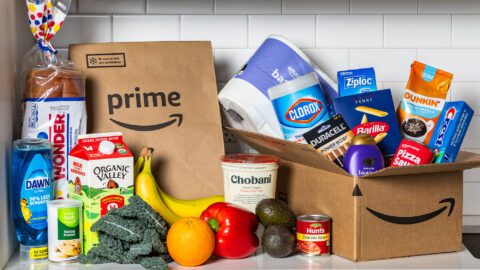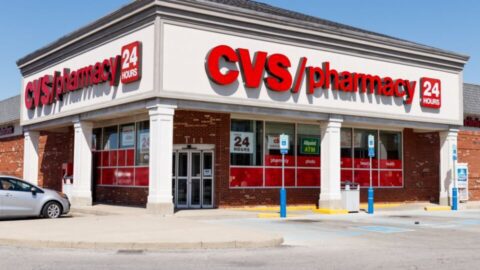Inflation and the threat of recession are defining aspects of the 2022 holiday season, but the potential bad news will do little to dampen a potentially successful — if not extraordinary — season. However, even with many of the last mile and supply chain challenges that plagued retail over the past two years largely sorted out, retailers need to refocus on preparing for uncertainty.
“This year is all about margin and profitability,” said Rob Garf, VP and GM, Retail at Salesforce in an interview with Retail TouchPoints. “We’re really concerned that margin will be the Grinch that steals Christmas. We’ve of course all heard, read or written about the costs in fuel and energy and manufacturing and supply chain and labor. There’s also the hidden cost around omnichannel operations. After a couple of years of getting really scrappy to leverage the store in new and creative ways, particularly around fulfillment, retailers are looking to figure out how to automate and create scale. Those that don’t are going to have a really difficult earnings season.”
All three experts interviewed by Retail TouchPoints touched upon the importance of maintaining margins as well as other key findings their research uncovered. Insights for the coming holiday season include:
- Recession fears, inventory management and reduced marketing spend will give carefully-planned promotions a long tail, according to KPMG, which surveyed retail leaders to study their predictions;
- Consumers are ready to spend, and offering an impeccable omnichannel experience will be essential to attracting customers and building loyalty, according to Coveo, which surveyed shoppers and examined attitudes on the season; and
- Digital sales will remain flat compared to 2021, but they’re still an enormous part of any retailer’s balance sheet — and competition will be fierce during this season, according to Salesforce, which examined both sales data and a shopper survey.
Retail Leaders Remain Optimistic About Holidays Despite Headwinds
Retailers are shifting gears as we enter the 2022 holiday season, and flexibility will be vital to navigating the challenges and opportunities that are coming. Both 2020 and 2021 each had their own clear themes and pressures, and this holiday season will be defined by trying to understand what has changed.
“It’s really the tale of two years,” said Matt Kramer, National Sector Leader, Consumer and Retail for KPMG US. “When you think of ‘20 versus ‘21, in ‘20 there was a lot of uncertainty. We were still in the pandemic, and I don’t think consumers really knew how long it was going to last, and that created uncertainty during the holiday period. As we got into ‘21 and vaccines were out and people really started to see the light at the end of the tunnel, they had been really saving over that period of time as well as getting some stimulus money, and I think there was quite a bit of pent-up demand.”
However, that demand has come and gone, and Kramer sees 2021’s sales growth of 14.1% as an outlier. KPMG has forecast holiday retail growth at a solid but notably more modest 4.2% increase over last year due to inflation eating into savings and fears of recession. Demand remains strong, given the circumstances, but shoppers have clearly started to pull back.
Retailers remain bullish despite the headwinds. KPMG’s survey of retail leaders found that 68% of respondents expect sales to improve over last year, while only 24% expect a drop in sales. That’s despite 92% expecting a recession in the near future and 71% saying the recession has already begun, or will begin within the next 12 months.
One of the biggest sources of optimism is an end to the supply chain challenges that defined 2021 and continued into 2022 — 59% of those surveyed expect minimal shortages and 30% aren’t expecting shortages at all. The bottom line: keeping items in-stock isn’t expected to be a problem this season.
Retailers are planning to cut back in one area: marketing. Companies plan to spend 30% of their marketing budget during the holidays, down from 36% in 2021. Kramer expects this to be offset by more promotional activity, which he called “one of the more significant levers that retailers can pull.” He expects more consistent promotional activity across the season that’s based on careful surveillance of shopper behavior, as opposed to reliance on Black Friday and Cyber Monday doorbuster specials. This change can be attributed to retailers pursuing better inventory management.
“Consumers can, even if they wait this year, expect some really good deals toward the end of the season,” said Kramer. “Inventory availability is not really a concern that anybody’s pointing to. It’s more avoiding having excess inventory or inventory that can overhang beyond the holiday season.”
Deals will be extremely important, but they won’t be the only thing on shoppers’ minds, according to Kramer. Retailers also need to promote their social and environmental bona fides and other loyalty-building efforts if they hope to win the season while also preserving their bottom lines.
“What’s so important in this dynamic environment that we’re in today is really doing the right thing by the customer and having a great experience for your shoppers in trying times,” said Kramer. “At times where there’s uncertainty, the economy’s putting a lot of pressure on budgets. If you can really please your customer when there’s stress in the system, they’re going to want to come back, and I think that’s so important.”
Shoppers are Ready to Spend, but Retailers Need to Bring Them in
Shoppers may be feeling the impact of inflation, but that isn’t dampening their holiday spirit — 80% said they plan to shop as much or more than in previous holiday seasons, according to a survey by Coveo. The interest is there — but with promotions playing such a large role this year, retailers need to be careful to keep their profit margins in mind. Promotions play a key part in any holiday strategy, but there are other options retailers can select that have less impact on the bottom line.
“You really have to appeal to the shopper to get them to come aboard, whether it’s content or immediacy, or maybe scarcity or popularity,” said Brian McGlynn, General Manager of Ecommerce at Coveo in an interview with Retail TouchPoints. “These options all go into a large pool of ways that a retailer can get a product to sell. We have one retailer asking about sustainability and things that are highly sustainable — those will convert, and profit margins will be high. You’re getting better conversion rates but you’re also not having to discount, and that’s really the big thing.”
Coveo found that omnichannel retailers are at an advantage this holiday season, not least because they are set up to meet one of shoppers’ biggest demands: convenient fulfillment options. Among surveyed consumers, 42% said they will leave a retail site if shipping options are limited or they don’t have a buy online, pick up in-store option.
“Omnichannel absolutely is an advantage for retailers,” said McGlynn. “Take for example Macy’s. They’ve had activist investors wanting to go through and split up the company, saying there’s more valuation for macys.com and citing the risks of brick-and-mortar. I commend their CEO for standing up and saying no. They work together [so that] the sum of the parts is greater than the individual pieces.”
Another omnichannel advantage becomes clear when you look at what shoppers want from retailers: more than two-thirds (67%) are interested in product recommendations, tailored offers, discounts, and promotions. A strong omnichannel offering can connect all these elements into a cohesive experience that transcends any single shopping journey and meet customers where and when they want to shop.
Retailers also need to utilize AI and other data analysis tools to follow these journeys. The holiday season brings in a flood of new shoppers, and personalized options like tailored discounts can ensure the right ones become long-term customers.
“We can get signals as to whether a person has long-term value,” said McGlynn. “We can see that by the way they search and by the way they express explicit intent. We’re coming to a point where we can go in and really understand that okay, we want to offer a discount up front for the first time to bring them over. It also may be a case of whether the customer acquisition cost is a long-term value versus someone who’s just price shopping. They’d be a non-ideal customer, which will be okay to churn. It really comes down to the strategy for moving less toward growth and more toward profit margin.”
Digital Sales Will be Flat — but Lucrative in a Very Competitive Environment
The Salesforce Shopping Index, which analyzes global data from more than one billion consumers, forecasts online sales will remain essentially flat this holiday season. November and December sales are expected to reach $1.1 trillion worldwide (down 2% from 2021) and $265 billion in the U.S. (up 3%). This is no surprise — brick-and-mortar is expected to play a larger role in a post-pandemic world — but there will still be plenty of digital spending to capture. Online sales in the U.S. are still expected to be up 61% compared to pre-pandemic 2019.
“Retailers spent a lot of time, energy and money over the last couple of years acquiring new customers, and now we’re entering the holiday season and they’re looking very closely at how they engage those new customers,” said Salesforce’s Garf. “How do they attract new customers, but at the same time be mindful that after three bad experiences, a majority of consumers will leave a brand? There’s fleeting loyalty in these inflationary times. That’s my long way of saying marketing, store ops, supply chain are all feeling the heat as it relates to margin.”
Salesforce expects increasing costs for suppliers, labor and transportation will outpace retailers’ ability to pass these costs onto customers, reducing profits by as much as 10%. This will equate to an incremental $1.4 trillion cost of goods sold globally compared to the 2021 holiday season.
Inflation also will prompt consumers to kick off their holiday shopping even earlier than last year. A survey by Salesforce found that 42% of shoppers plan to start shopping earlier than ever, and Salesforce predicts that 29% of sales will occur during the first three weeks of November — before Cyber Week begins — which would be a 5% increase over 2021.
The pressure and uncertainty faced by both retailers and shoppers mean that this holiday season will be particularly fierce. Retailers will need to compete for shoppers while keeping margins in mind, and also ensure that they don’t miss a beat between that initial product search and the last mile. That’s especially critical with the total number of orders on the decline —Salesforce expects 5% fewer in the U.S. and 7% globally.
“Consumers are paying more for products and spending roughly the same amount — therefore they’re buying fewer products, placing fewer orders, likely at fewer retailers,” said Garf. “It really creates a competitive marketplace. That’s inflation for the consumer. For the retailer, it’s super interesting, because we talked about the rising costs as relates to supply chain labor, energy and fuel. But the hidden costs will be around the store and marketing. Particularly in-store, because over the last couple of years as digital grew, the store evolved and in many cases became a fulfillment hub.”
Additional reporting by Alicia Esposito















